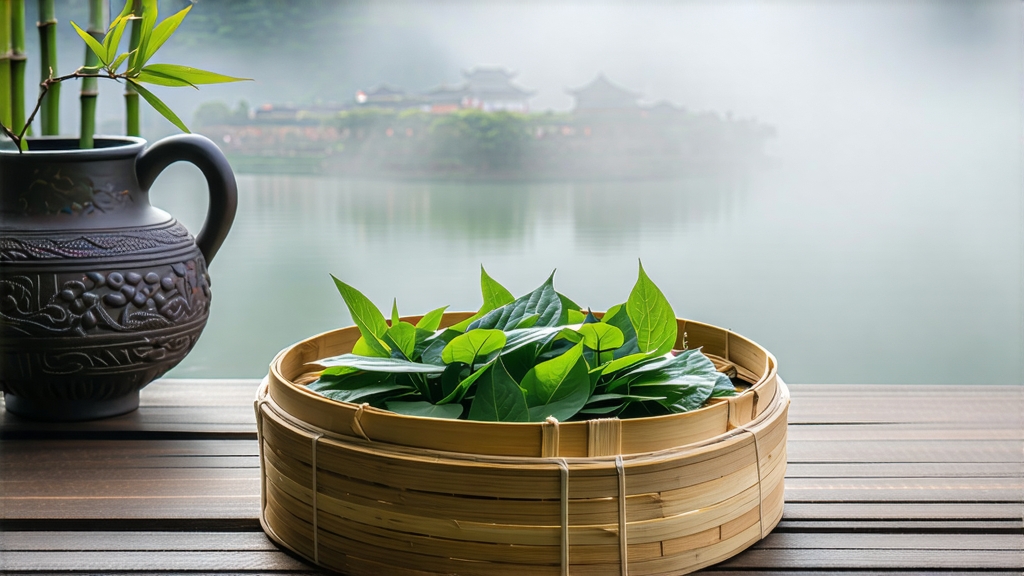
Longjing, literally “Dragon-Well,” is not merely a tea; it is a living scroll of Hangzhou’s hills, a sip of Chinese history, and a master-class in the art of green tea. To international drinkers who know only the generic word “green tea,” Longjing offers a revelation: a single cultivar can carry the aroma of roasted chestnuts, the sweetness of spring peas, and the mineral echo of limestone soil—all in one pale jade infusion. This essay invites you to travel from the Tang dynasty to the third-wave cafés of Brooklyn, tracing how a handful of leaves from the shores of West Lake became the global benchmark for Chinese green tea.
Historical roots
The first written record dates to the Tang (618-907), when the monk-poet Lu Yu listed “Longjing spring water” as ideal for brewing in his Classic of Tea. By the Song (960-1279), Buddhist monks at the Lion Peak monastery were already pan-firing leaves to stop oxidation, a technique that would define green tea forever. Imperial fame arrived in the Qing: Emperor Qianlong, touring the south in 1751, planted eighteen tea bushes himself at Shifeng Peak and decreed the leaves “tribute tea,” couriered each spring to the Forbidden City packed in silk and lotus leaves. Those eighteen bushes still survive, pampered like bonsai celebrities, and their offspring now supply the most coveted pre-Qingming lots sold at auction for more than the price of silver.
Terroir and cultivars
Authentic Longjing can legally be produced only within the 168 km² “West Lake Protection Zone,” a UNESCO site where subtropical mist, quartz-rich soil, and diurnal swings of 10 °C create a natural “greenhouse” of slow growth. Within this micro-region five peaks confer distinct personalities:
• Shifeng (Lion Peak) – highest elevation, orchid nose, longest aftertaste.
• Meijiawu – the classic “nutty” profile, birthplace of the Mei cultivar.
• Wengjiashan – iron-rich soil yields a slightly metallic snap prized by sommeliers.
• Longjing Village – the original well itself; tea here carries a faint sesame note.
• Hupao (Tiger Running Spring) – mineral water source; leaves absorb its flinty character.
Beyond geography, two clonal cultivars dominate: the traditional Longjing #43, bred in 1970 for early budding and resistance to spring frost, and the heirloom Qunti (population) bush whose gnarled older trees give lower yields but deeper complexity. Japanese gyokuro lovers often find a spiritual cousin in Qunti Longjing: both share shade-driven theanine richness, though achieved by mist rather than bamboo blinds.
Harvest calendar
The Chinese lunar calendar governs everything. “Before Qingming” (April 4–6) designates the first 28 days of spring growth; buds at this stage contain 4 % amino acids and only 12 % catechins, yielding the famous “four greens”: green color, green soup, green aroma, green leaf base. The second flush “Before Grain Rain” (April 20) is still excellent but gains a grassier edge. After May 1, leaves are relegated to restaurant-grade bulk tea, often shipped to North Africa for mint tea blends. Pickers work at dawn when dew weight plumps the bud, adhering to the “one bud, one leaf” or even “one bud, just showing leaf” standard that yields 60,000 tips per 500 g of finished tea.
Pan-firing: the 10-hand dance
While Japanese greens are steamed, Longjing is shaped and dried in a hot wok, a technique called pan-firing (shaqing). A master—always titled “tea doctor”—heats the iron wok to 180 °C, then within 12 minutes performs ten distinct hand motions:
- Grab – toss leaves to evaporate surface moisture.
- Press – flatten buds against wok to rupture cell walls.
- Shake – aerate to prevent scalding.
- Rub – twist the iconic “flat flag” shape.
- Re-press – set the crease.
- Lift – cool leaves briefly.
- Slide – align tips parallel.
- Pat – polish surface.
- Coil – spiral leaves into neat piles.
- Send – sweep finished tea onto bamboo trays.
Temperature is modulated by intuition: too high and